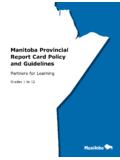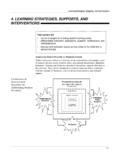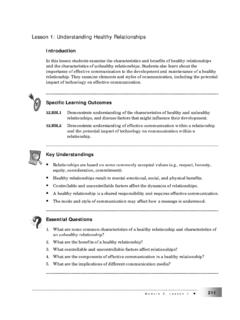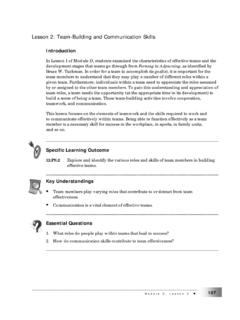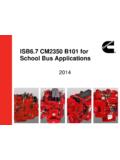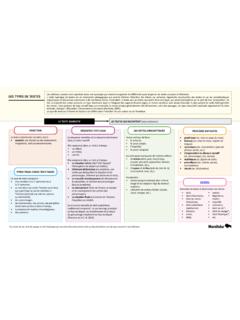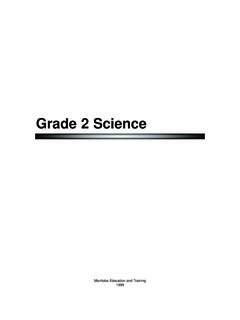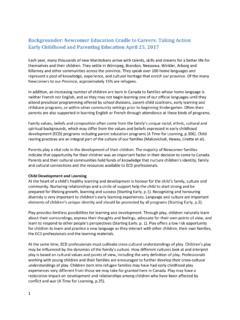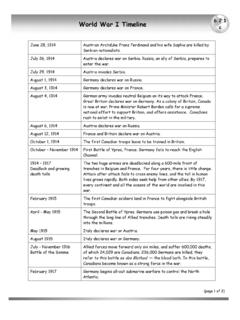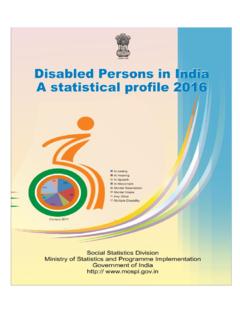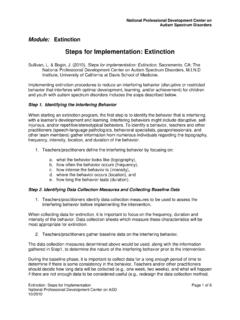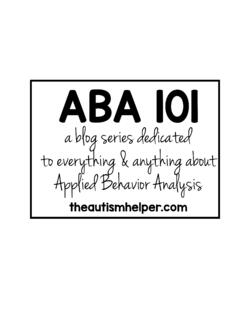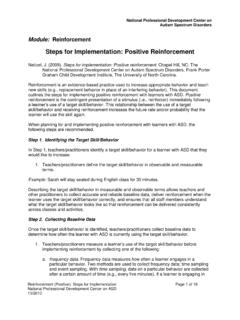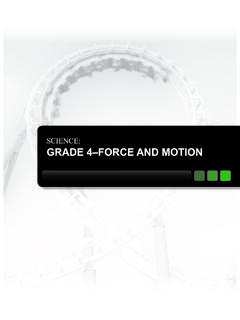Transcription of FUNCTIONAL COMMUNICATION MEASURES: Birth 21 Years
1 23 FCM: Articulation/Phonology*Target Population: Any verbal child presenting with delayed or atypical phonological development, oral motorapraxia, or dysarthric speech secondary to congenital or acquired disorder. Speech sound production, phonologicaldevelopment, syllable structures, and overall intelligibility should be considered. All aspects of motor speechproduction (including articulation, respiration, resonance, prosody/rate, as well as timing, sequencing, andcoordination of oral volitional movements) should be 0 Independent: Production of speech is normal in all contexts or is appropriate forchronological 1 Mild: Speech intelligibility is good even if listener and context is unfamiliar.
2 A fewinappropriate errors or speech patterns for developmental level are noted. Syllableerrors, slurring, or decreased rate may be noted. Frequently 2 Mild-Moderate: Speech is intelligible approximately 75% of the time. Soundproductions are noticeable in error. Nondevelopmental or earlier-appearingphonological patterns may be present. Imprecise sequencing or coordination ofspeech sounds may be evident. Ability to self-correct is inconsistent. Socialinteractions consistent with chronological age may be 3 Moderate: Speech is intelligible approximately 50% of the time.
3 Repetition isrequired unless context is familiar. Sound errors are not found in age-matched peerswho are members of the same speech community. Substitutions, omissions, anddistortions, or earlier phonological patterns continue to be noted. Errors in timing,sequencing, or coordinating speech sounds are noted. May use compensatory ornondevelopmental speech patterns ( , backing, glottal stops). May avoid talkingdue to not being understood. Social interactions appropriate for chronological age 4 Moderate-Severe: Speech is intelligible approximately 25% of the single words and short phrases are understood when the context isknown.
4 Numerous substitutions, omissions, distortions, or phonological patterns arenoted. Difficulty in programming or controlling the timing, sequencing, coordination,and articulatory positions for speech are noted. May use compensatory ornondevelopmental speech patterns ( , backing, glottal stops). Social interactionsconsistent with chronological age are 5 Severe: Speech attempts are intelligible less than 10% of the time. Limited use ofspeech for chronological age. Difficulty in programming or controlling the timing,sequencing, coordination, and articulatory positions necessary to produce speech isnoted.
5 May use compensatory or nondevelopmental speech patterns ( , backing,glottal stops). Social interactions appropriate for chronological age are 6 Profound: No correct production of speech sounds. Sounds are not used interactions appropriate for chronological age are *Adapted from The American Speech-Language-Hearing Association (ASHA) National Treatment Outcome data collection Project, : Augmentative/Alternative COMMUNICATION Comprehension*Target Population: Individuals who use a symbolic system, such as an electronic or manual system, as theirprimary means of 0 Independent: Comprehension of augmentative/alternative COMMUNICATION isfunctional for events in the environment in all 1 Mild.
6 Comprehension of augmentative/alternative COMMUNICATION is effective forevents in the environment in most situations, although slight difficulty may occur inability to self-monitor. Cueing is seldom required. Self-monitoring is evidentapproximately 90% of the 2 Mild-Moderate: Comprehension of augmentative/alternative COMMUNICATION is goodbut limited by complexity of form, content, and/or use. Occasional cueing and/orassistance is required. Self-monitoring is evident approximately 75% of the 3 Moderate: Comprehension of augmentative/alternative COMMUNICATION is limited toroutine events, simple novel COMMUNICATION , and some more complex cueing in the form of repetition or rephrasing of stimuli, or redirectionand assistance is required to comprehend.
7 Self-monitoring is evident approximately50% of the 4 Moderate-Severe: Comprehension of augmentative/alternative COMMUNICATION islimited to routine events in restricted contexts and does not include comprehension ofnovel COMMUNICATION . Consistent environmental cueing and assistance is required tocomprehend. Self-monitoring is evident approximately 25% of the 5 Severe: Limited comprehension of augmentative/alternative COMMUNICATION relativeto events in the environment. Always requires environmental cueing and maximumassistance to comprehend.
8 No 6 Profound: No comprehension of augmentative/alternative *Adapted from The American Speech-Language-Hearing Association (ASHA) National Treatment Outcome data collection Project, : Augmentative/Alternative COMMUNICATION Production*Target Population: Individuals who use some type of symbolic, manual, or electronic system as a means ofexpression. Note: You may score this FCM as well as the Language Production, Voice Disorder, orArticulation/Intelligibility FCM, if applicable, if the individual uses a combination of both oral andaugmentative/alternative COMMUNICATION and goals have been established in any of these 0 Independent: Production of augmentative/alternative COMMUNICATION is functionalfor events in the environment in all 1 Mild: Production of augmentative/alternative COMMUNICATION is effective for eventsin the environment, although slight difficulty may occur.
9 Self-monitoring is evidentapproximately 90% of the 2 Mild-Moderate: Production of augmentative/alternative COMMUNICATION is functionalbut limited in complexity of form, content, and/or use in familiar contexts. Self-monitoring is evident approximately 75% of the 3 Moderate: Uses simple, routine, and novel augmentative/alternative communicationto meet FUNCTIONAL needs in restricted contexts. COMMUNICATION breakdown isfrequent for more complex forms and ideas. Self-monitoring is evident approximately50% of the 4 Moderate-Severe: May produce occasional meaningful augmentative/alternativecommunication in restricted contexts.
10 Self-monitoring is evident approximately 25%of the 5 Severe: May produce occasional augmentative/alternative COMMUNICATION that isprimarily nonfunctional in the environment. No 6 Profound: No augmentative/alternative COMMUNICATION in any *Adapted from The American Speech-Language-Hearing Association (ASHA) National Treatment Outcome data collection Project, : Cognitive Orientation*Target Population: Any individual whose treatment plan specifically addresses cognitive, pre-language, or lifeskills goals, such as cause-effect, attention to task, eye contact, task sequencing, retention, 0 Independent.
